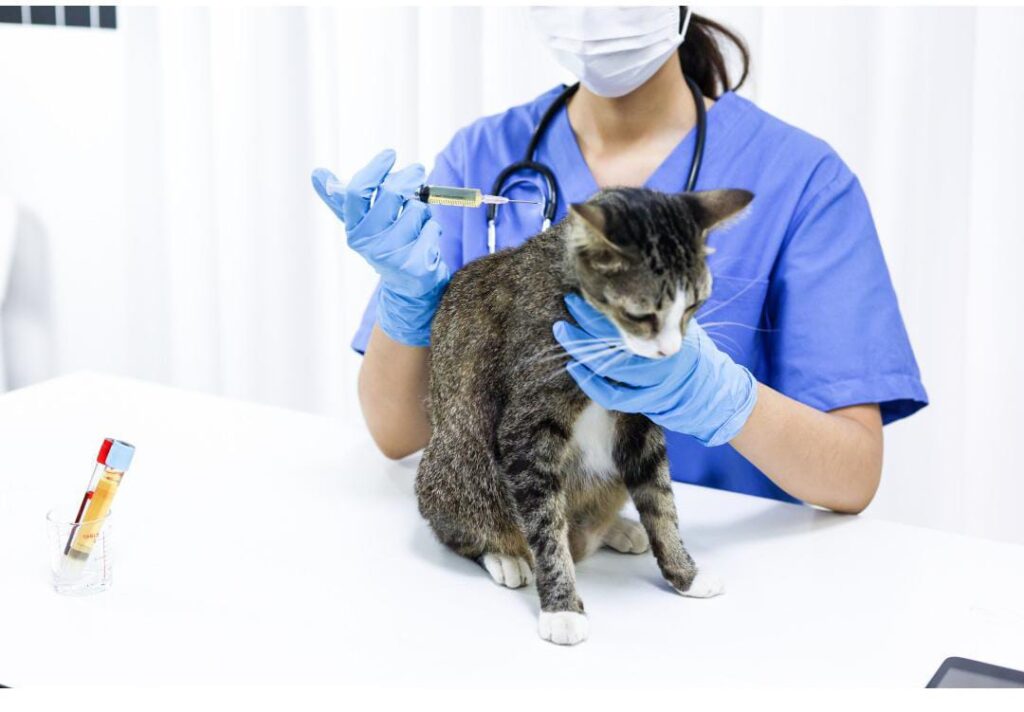Exploring Veterinary Medicine: Understanding Formulation and Pet Medication Options

Welcome to our journey into the fascinating world of Veterinary Medicine, where we’ll delve into the intricacies of pet medication formulation and options.
Definition of Veterinary Medicine
Veterinary Medicine encompasses the branch of healthcare focused on the prevention, diagnosis, and treatment of diseases and injuries in animals, ranging from household pets to livestock and wildlife.
Importance of Pet Medication in Veterinary Practice
In the realm of Veterinary Medicine, pet medication plays a crucial role in ensuring the health and well-being of our furry companions. Whether it’s administering antibiotics to treat infections, providing pain relief for aging pets, or managing chronic conditions like diabetes, pet medication is indispensable in veterinary practice.
Join us as we explore the various formulations and options available in pet medication, shedding light on how veterinarians tailor treatments to meet the unique needs of each animal patient.
Understanding Veterinary Formulation
Let’s unravel the secrets behind veterinary formulation and its vital role in pet medication.
Explanation of Veterinary Formulation
Veterinary formulation refers to the process of developing and preparing medications specifically tailored for animals. It involves carefully selecting ingredients and determining the appropriate dosage forms to ensure safe and effective treatment for our furry friends.
Role in Pet Medication Development
Veterinary formulation is essential in the development of pet medications, as it determines factors such as dosage form, strength, and route of administration. Whether it’s a pill, liquid, or topical treatment, veterinary formulations are designed to meet the unique needs of different animal species and conditions.
Understanding veterinary formulation helps veterinarians provide optimal care and treatment for animals, ensuring their health and well-being
Factors Influencing Formulation
Let’s explore the various factors that influence the formulation of medications in Veterinary Medicine.
Considerations for Different Animal Species
When formulating medications for animals, veterinarians must consider the unique physiology and metabolism of different species. Factors such as body size, digestive system, and metabolic rate play a crucial role in determining the appropriate dosage form and strength for each animal.
Methods of Administration: Oral, Topical, Injectable

The method of administration also influences veterinary formulation. Whether it’s an oral medication, topical cream, or injectable solution, veterinarians choose the most suitable route based on factors such as the type of condition being treated, the behavior of the animal, and the desired onset of action.
By taking these factors into account, veterinarians ensure that medications are formulated in a way that maximizes efficacy and safety for animal patients.
Types of Pet Medications and Formulation Options
Let’s explore the different types of pet medications and their formulation options available in Veterinary Medicine.
Tablets and Capsules

Advantages and Disadvantages
Tablets and capsules offer convenience in administering precise doses to pets. They are often flavored to improve palatability and can be easily stored. However, some pets may have difficulty swallowing them, and dosing adjustments may be challenging.
Examples of Common Tablet and Capsule Formulations
Common tablet and capsule formulations for pets include antibiotics, such as amoxicillin and cephalexin, and pain medications. These formulations are widely used in veterinary practice for treating various conditions in animals.
Understanding the advantages and disadvantages of tablets and capsules helps veterinarians select the most suitable formulation for each patient’s needs.
Understanding Liquids and Suspensions in Veterinary Medicine
Characteristics and Applications
Liquids and suspensions are go-to options in veterinary medicine for their adaptability and ease of administration. Unlike solid medications, these formulations come in liquid form with particles suspended in them, allowing for various delivery methods like oral, topical, or injectable.
They’re particularly handy for precise dosing, making them suitable for animals of all shapes and sizes. Veterinarians often rely on them for medications requiring accurate measurements or those challenging to give in pill form.
Considerations for Palatability and Stability
When crafting liquids and suspensions for veterinary use, palatability is a top concern. Animals, much like humans, have preferences, so adding flavors or sweeteners can encourage them to take their medication willingly, improving compliance and effectiveness.
Stability is another critical factor. These formulations must maintain their potency over time, even under different storage conditions. Proper packaging and storage guidelines are essential to ensure the medication remains effective throughout its shelf life.
In veterinary medicine, liquids and suspensions are indispensable tools, offering flexibility and reliability for treating our furry companions.
Exploring Topical Formulations in Veterinary Medicine
Applications in Dermatology and Wound Care
Topical formulations play a crucial role in veterinary medicine, especially in dermatology and wound care. They are applied directly to the skin surface, making them ideal for treating various skin conditions such as infections, inflammations, allergies, and wounds.
These formulations provide localized therapy, targeting specific areas of concern without the need for systemic administration. They can be in the form of creams, ointments, gels, sprays, or solutions, offering versatility in application methods.
Challenges and Considerations for Topical Medications
While topical medications offer many benefits, there are challenges and considerations to keep in mind. One such challenge is ensuring proper absorption through the animal’s skin, which can vary depending on factors like species, breed, and the condition of the skin barrier.
Another consideration is the potential for animals to lick or ingest the medication, which may affect efficacy or lead to adverse reactions. Thus, formulations must be designed with ingredients that are safe if ingested and discourage licking.
Additionally, maintaining stability and potency of the active ingredients in topical formulations can be challenging, especially considering environmental factors such as temperature and exposure to light.
In conclusion, topical formulations are valuable tools in veterinary medicine for addressing dermatological issues and wound care. Understanding and addressing the challenges associated with these medications are essential for their effective use in treating animals.
Customized Formulation Options in Veterinary Medicine
Compounded Medications: Definition and Purpose
Compounded medications refer to customized pharmaceutical preparations tailored to meet the specific needs of individual patients, including animals. They are prepared by pharmacists or veterinary compounding specialists based on a prescription from a veterinarian.
The primary purpose of compounding is to provide solutions when commercially available medications are not suitable or available in the required dosage form, strength, or flavor for a particular animal. It allows for the creation of personalized medications that address unique patient requirements.
Examples of Customized Formulations for Pets
Several customized formulations can be compounded for pets, addressing various health issues and administration preferences. Examples include flavored liquids or suspensions for easier administration, especially for pets that are difficult to medicate with traditional dosage forms like pills.
Transdermal gels or creams are another option, providing an alternative to oral administration for pets with gastrointestinal sensitivities or those who refuse to take medications orally. These formulations are applied directly to the skin, allowing for systemic absorption of the medication.
Furthermore, compounded medications can include combinations of active ingredients tailored to address specific conditions, such as pain management or dermatological issues, in a single formulation.
In summary, compounded medications offer tailored solutions for pets’ unique needs, providing alternatives to commercially available medications and enhancing treatment compliance and effectiveness.

Tailored Dosage Forms in Veterinary Medicine
Importance of Individualized Treatment
Individualized treatment plays a crucial role in veterinary medicine as every pet is unique and may have specific needs or conditions that require personalized care. Tailored dosage forms allow veterinarians to provide precise medication delivery based on factors like the pet’s size, species, health status, and preferences.
Customizing dosage forms ensures optimal treatment outcomes by addressing the individual requirements of each pet, leading to improved compliance, efficacy, and overall well-being.
Examples of Tailored Dosage Forms for Specific Pet Needs
Tailored dosage forms come in various types to accommodate the diverse needs of pets. For example, flavored liquids or chewable tablets are ideal for pets that may have difficulty swallowing pills or dislike the taste of medications.
Transdermal gels or creams offer an alternative administration route for pets with gastrointestinal issues or those unable to take medications orally. These formulations are applied to the skin, allowing for absorption through the skin barrier.
Additionally, sustained-release formulations are available to provide prolonged drug release, reducing the frequency of administration and ensuring consistent therapeutic levels in the pet’s system.
By offering tailored dosage forms, veterinarians can better meet the individual needs of their patients, resulting in optimized treatment outcomes and enhanced quality of life for pets.
Alternative Delivery Methods in Veterinary Medicine
Innovations in Pet Medication Administration
Innovations in pet medication administration are transforming veterinary medicine, offering new and convenient ways to administer treatments to furry companions. These alternative delivery methods cater to the diverse needs of pets and their owners, enhancing treatment compliance and efficacy.
One such innovation is the use of flavored medications, making it easier to disguise the taste of medications and encourage pets to take them willingly. This is particularly beneficial for picky eaters or pets who resist medication administration.
Emerging Trends in Veterinary Formulation
Emerging trends in veterinary formulation are driving advancements in medication delivery for pets. One notable trend is the development of transdermal medications, which are applied to the skin and absorbed into the bloodstream. This offers an alternative to oral administration, especially for pets with gastrointestinal issues or difficulty swallowing pills.
Another emerging trend is the use of sustained-release formulations, which gradually release medication over time, reducing the frequency of administration and ensuring consistent therapeutic levels in the pet’s system. This can improve treatment compliance and reduce the stress of frequent medication dosing for both pets and their owners.
By embracing these innovations and emerging trends in veterinary medicine, veterinarians can provide more effective and convenient treatment options for their patients, ultimately improving pet health and well-being.
Additionally, another noteworthy trend in veterinary formulation involves the creation of chew treats infused with medications. These treats offer a palatable and convenient method of administering medication to pets, especially those who are finicky eaters or resistant to traditional forms of medication. Chew treats provide an enjoyable experience for pets while ensuring they receive their necessary medication. Integrating chew treats into veterinary compounding expands the range of options available to veterinarians and enhances compliance among pet owners, contributing to improved pet health outcomes and overall well-being.
Safety and Regulatory Considerations in Veterinary Medicine
-
Quality Assurance and Regulation
Standards for Pet Medication Formulation
Ensuring the quality and safety of pet medication formulations is paramount in veterinary medicine. Regulatory bodies establish standards for formulation, including requirements for ingredient quality, manufacturing processes, and labeling accuracy. These standards aim to guarantee that medications meet specific criteria for safety, efficacy, and consistency.
-
Risks and Side Effects
Understanding Potential Risks of Medication Formulation
While pet medication formulations undergo rigorous testing and regulation, there are still potential risks and side effects associated with their use. These may include adverse reactions to active ingredients, allergic responses, or interactions with other medications. It’s essential for pet owners to be aware of these risks and consult with a veterinarian before administering any medication to their pets.
Importance of Veterinary Guidance and Monitoring
Veterinary guidance and monitoring are vital in minimizing the risks associated with medication use in pets. Veterinarians are trained to assess the individual needs of each animal, prescribe appropriate medications, and monitor their response to treatment. Regular check-ups and follow-up appointments allow veterinarians to evaluate the effectiveness of medication therapy and address any emerging concerns or side effects promptly.
By adhering to safety standards, seeking veterinary guidance, and monitoring medication use closely, pet owners can help ensure the well-being and safety of their furry companions.
Conclusion: Enhancing Pet Health through Veterinary Medicine
In conclusion, veterinary medicine plays a crucial role in safeguarding the health and well-being of our beloved pets. Through a variety of medication formulations and customized options, veterinarians can address a wide range of health concerns and conditions, ensuring optimal treatment outcomes for furry companions.
Understanding the importance of tailored medication options allows pet owners to actively participate in their pets’ healthcare journey, providing them with the necessary tools and knowledge to make informed decisions about their pets’ treatment.
As advocates for pet health, we encourage pet owners to seek veterinary advice and guidance for their medication needs. Veterinarians possess the expertise and experience to recommend the most suitable medication options and provide ongoing monitoring to ensure the safety and effectiveness of treatment plans.
By working together with veterinarians, pet owners can ensure that their furry friends receive the best possible care and enjoy long, healthy lives filled with love and companionship.
